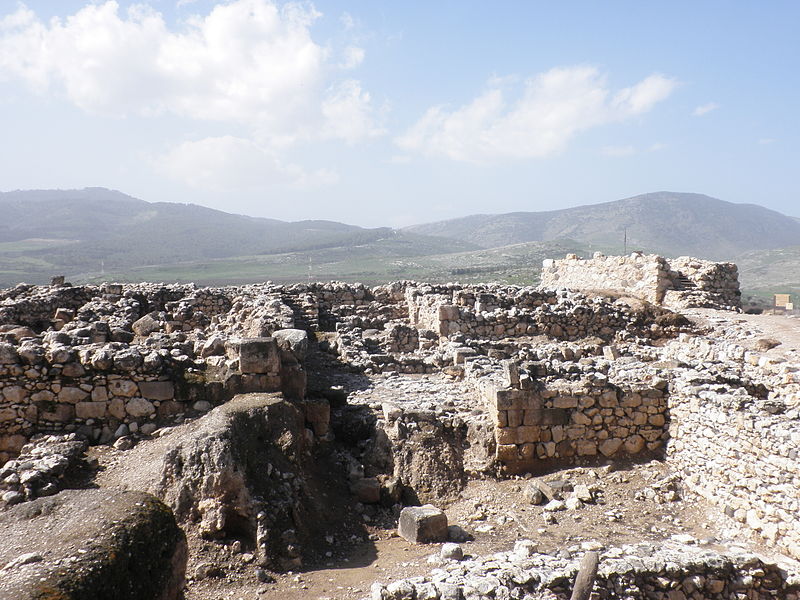4 May. Joshua embarks on the Northern Campaign in Canaan
“When Jabin king of Hazor heard about all that had happened, he sent messages to Jobab king of Madon, to the king of Shimron and to the king of Achshaph. He sent messages to the kings in the northern mountains and also to the kings in the Jordan Valley south of Lake Galilee and in the western hills. “
“He sent a message to the king of Naphoth Dor in the west and to the kings of the Canaanites in the east and in the west. He sent messages to the Amorites, Hittites, Perrizites and Jebusites in the mountains. Jabin also sent one to the Hivites, who lived below Mount Hermon in the area of Mizpah.”
“So the armies of all these kings came together with their horses and chariots. There were as many soldiers as grains of sand on the seashore. All of these kings met together at the waters of Merom, joined their armies together into one camp, and made plans to fight against the Israelites.”
“Then the LORD said to Joshua, ‘Don’t be afraid of them, because at this time tomorrow I will give them to you. You will cripple their horses and burn all their chariots.”
“So Joshua and his whole army surprised the enemy by attacking them at the waters of Merom. The LORD handed them over to Israel. They chased them to greater Sidon, Misrephoth Maim and the Valley of Mizpah in the east. Israel fought until none of the enemy was left alive. Joshua did what the LORD said to do: he crippled their horses and burned their chariots.”
“Then Joshua went back and captured the city of Hazor and killed its king. (Hazor had been the leader of all the kingdoms that fought against Israel.) Israel killed everyone that lived in Hazor, completely destroying them; no one was left alive. Then they burned Hazor itself.”
“Joshua captured all of these cities, killed all of their kings, and completely destroyed everything in these cities. He did this just as Moses, the servant of the LORD, had commanded. But the Israelites did not burn any cities that were built on their hills, except Hazor; only that city was burned by Joshua.”
“The people of Israel kept for themselves everything they found in the cities, including all the animals. But they killed all the people there; they left no one alive.”
(Joshua 11:1-14)

Having conquered much of the southern region of Canaan in c.1406BC, the Israelites embarked the following year on a further campaign to subjugate the northern cities of Canaan.
After a surprise attack at the Waters of Meron that routed the kings of Hazor, Madon, Shimron and Achshaph, the Israelites followed this up by capturing the city of Hazor and the central hill country south of the Lake of Kinnereth (the Sea of Galilee).
By the end of the year, the Israelites had secured the whole of the uplands from Hebron in the south to Hazor in the north (see the map on 23 April).
While the Israelites successfully conquered the central hill country of Canaan (where the terrain favoured surprise attacks and hand-to-hand fighting), they were less successful in subduing the cities of the surrounding lowland plains.
Here, the more technologically advanced societies deployed spear-throwers on fast-moving chariots to defend their cities (see Joshua 16:16). Neither were they able to take the Phoenician cities of Tyre and Sidon to the north on the coast of Lebanon (see Joshua 13:1-5).
Unable to use chariots in the central hill country, the Israelites resorted to hamstringing the horses and destroying the chariots that they captured from their enemies in the surrounding lowlands (see Joshua 11:9).
Indeed, the Israelites only began to use chariots in battle some four hundred years later when King Solomon built three ‘chariot cities’ at Hazor, Megiddo and Gezer in c.947BC to defend the Vale of Jezreel and the coastal Plain of Sharon (see 1 Kings10:26-29).
Archaeological excavations at Tell el-Kedah - the site of Hazor - have revealed the remains of King Jabin’s palace underneath a metre-thick layer of ash and debris, as well as more recent remains dating from the reign of King Solomon when the city was rebuilt (see 1 Kings 9:15). These later remains include a magnificent six-chambered gateway (similar to the one built by Solomon at Megiddo) and a deep shaft and tunnel leading to an underground water supply (again similar to the water system at Megiddo).
The photo (by Qasinka) shows remains of the Citadel at Hazor.
You can read more about Hazor @ https://www.thebiblejourney.org/biblejourney2/27-the-israelites-move-into-canaan/joshua-embarks-on-the-northern-campaign/
